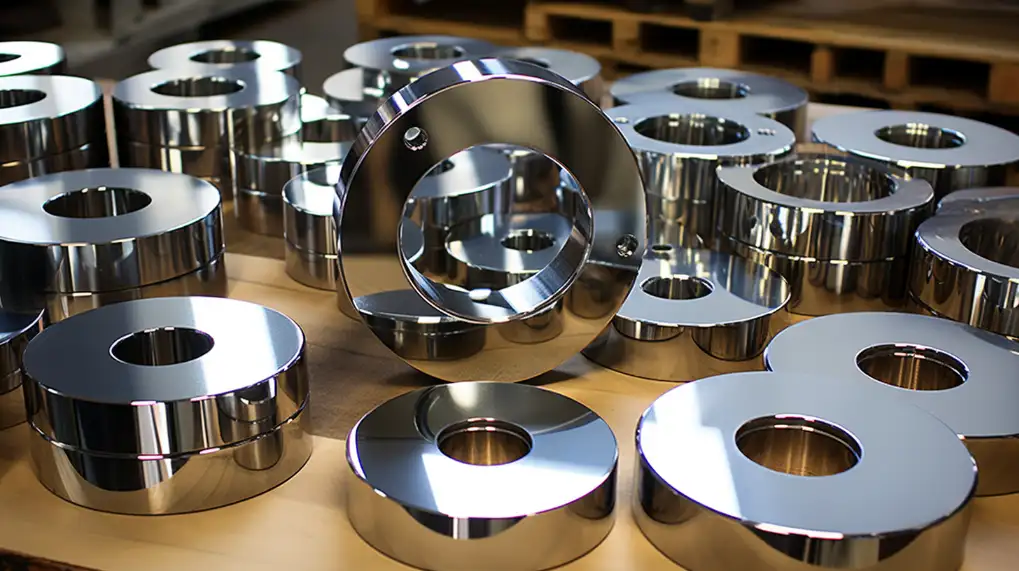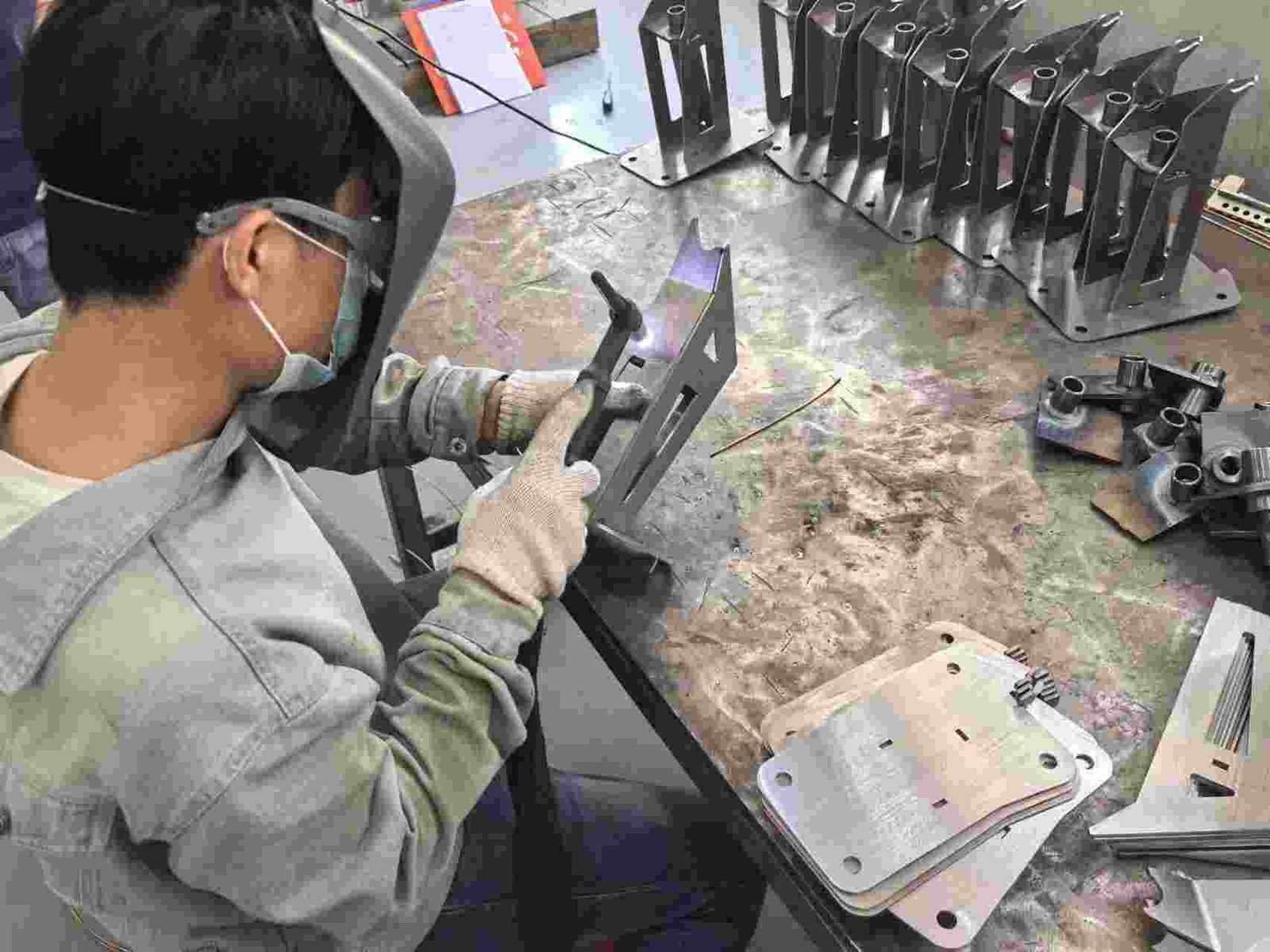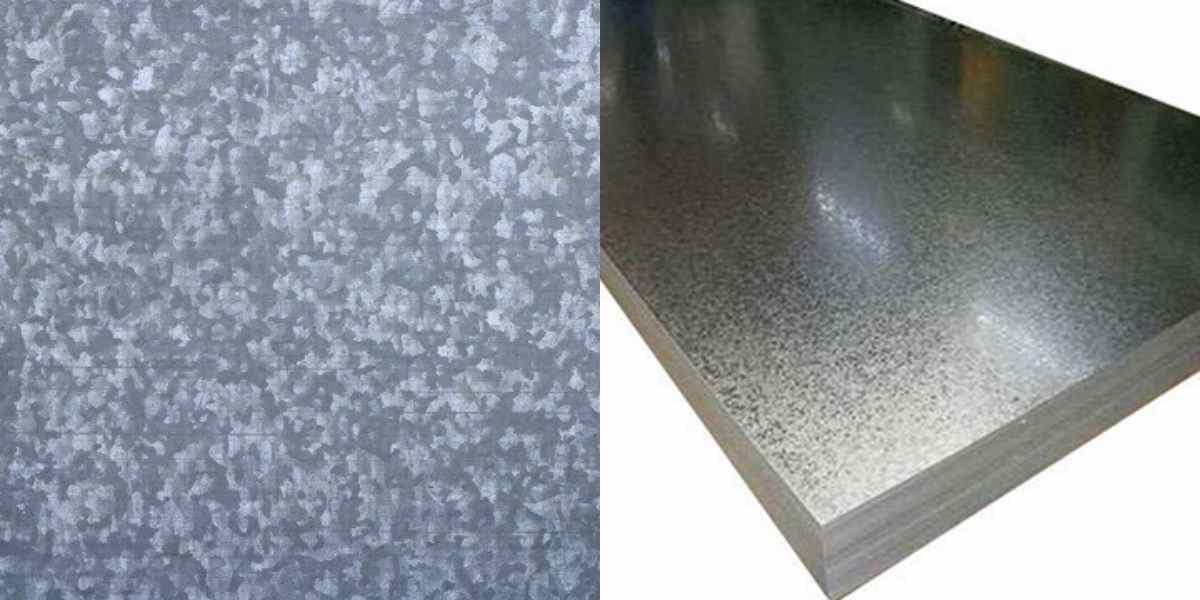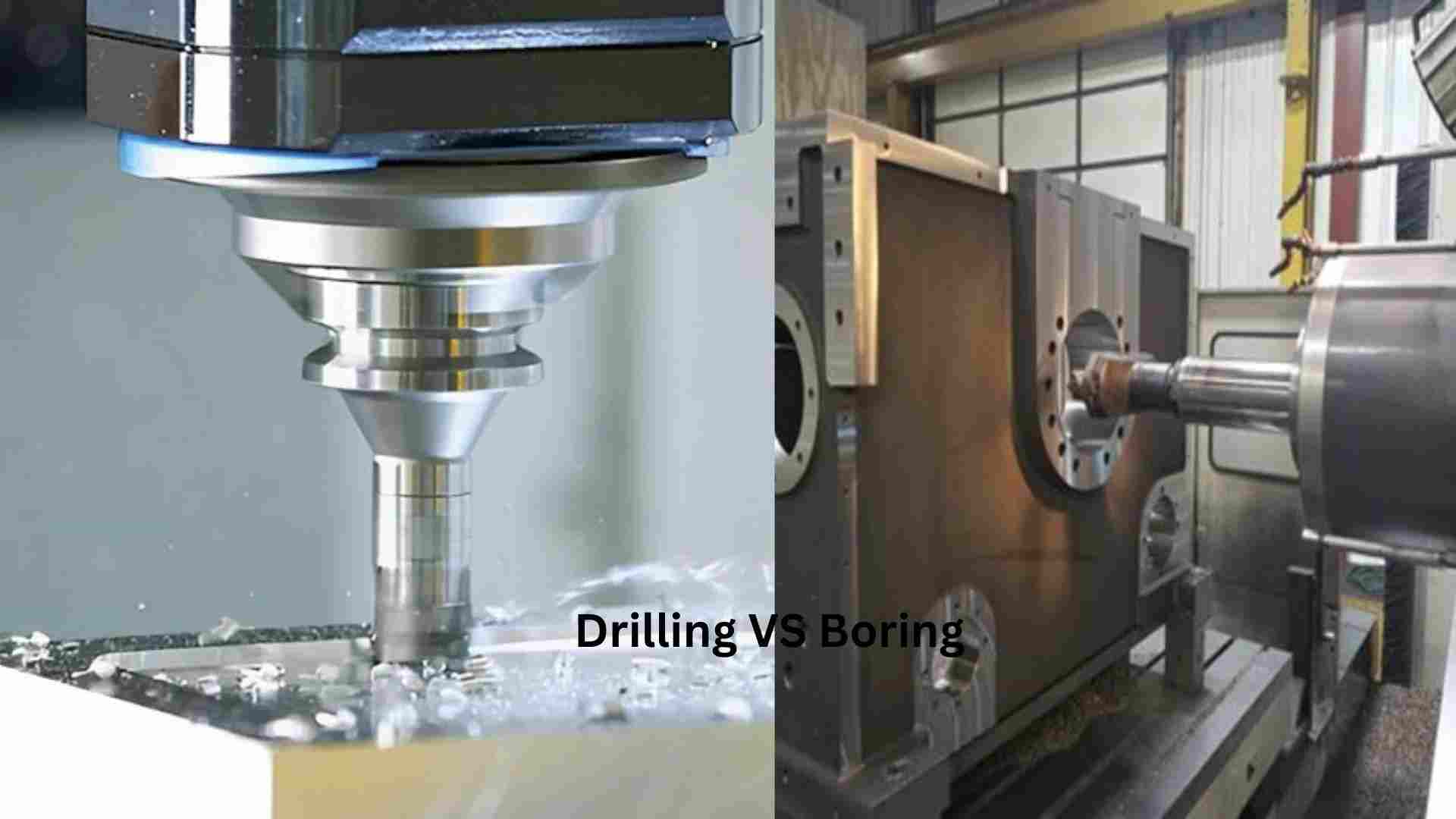Precision and cleanliness in the final product are essential when working with metals. Have you ever wondered why some metal parts feel smoother than others? The difference often comes down to a crucial step known as deburring.
Deburring is the process of removing minor imperfections, known as burrs, from metal parts after machining. These burrs are typically sharp, jagged edges that can affect the functionality and aesthetics of a part. By deburring, we ensure the parts are smooth, safe to handle, and fit for their intended use.
Continuing to read will reveal why deburring is critical in metal fabrication.
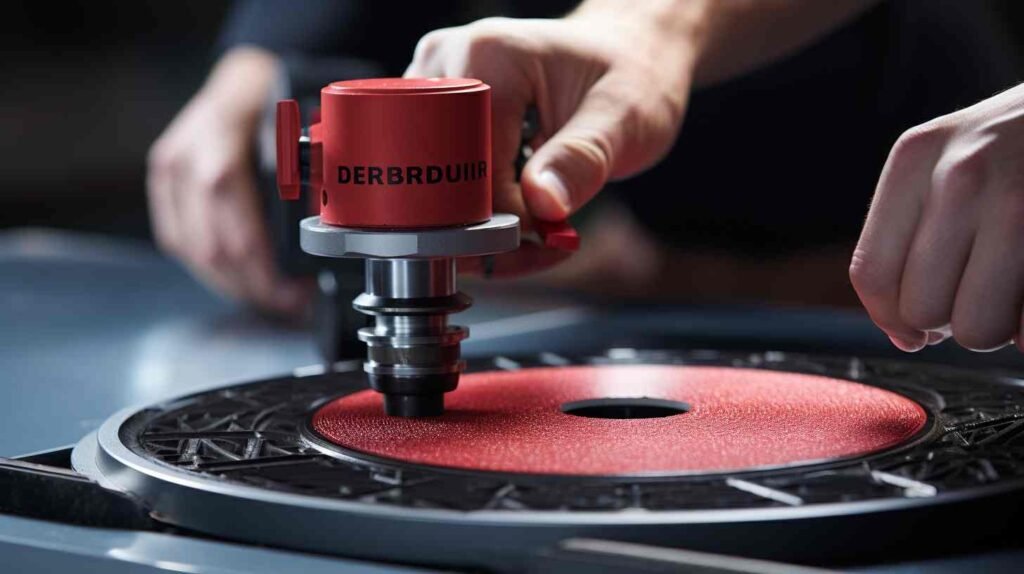
The Impact of Burrs
Burrs may seem like minor imperfections, but they can have significant consequences if left unchecked:
- Safety Hazards: Sharp burrs can cause cuts and injuries to workers handling the parts.
- Reduced Product Quality: Burrs can affect the appearance, fit, and function of the final product.
- Assembly Issues: Burrs can interfere with the proper assembly of components.
- Increased Manufacturing Costs: Additional deburring steps can add to production time and costs.
- Corrosion Risks: Burrs can create areas where moisture and contaminants can accumulate, leading to corrosion.
Deburring Definition: Why do they form and how?
Several factors contribute to burr formation during sheet metal fabrication. Here are some of the most common culprits:
Material Hardness
The more complex the material, the more likely it is to form burrs. Hard materials resist the cutting tool, sometimes resulting in fragmented edges.
Cutting Speed
High cutting speeds can generate heat and stress, causing the material to deform and create burrs.
Tool Wear
A worn tool loses its precision, often leading to uneven cutting and the formation of burrs.
The Wrong Lubricant
Using incorrect lubrication can increase friction and heat, exacerbating burr formation.
The Wrong Tool Geometry
Tools designed with inappropriate angles or dimensions for the task can push material rather than cut cleanly, forming burrs.
Feed Rate
Too fast a feed rate can overwhelm the material and tool, causing burrs; too slow can lead to material build-up on the tool, also creating burrs.
Machine Temperature
Excessive heat in the machine can soften the material, making it prone to burring.
Surface Roughness
Rougher surfaces increase the likelihood of burr development due to irregularities in the material surface interacting variably with the tool.
The Tool Path
An irregular tool path can lead to inconsistent cutting depths and burr formation.
Exit Angle
The angle at which a tool exits the workpiece can determine if the material pulls away cleanly or leaves a burr.
Edge Radius
A smaller radius can concentrate stress, making the material more likely to burr.
Stiffness of the Workpiece
Flexible materials may not support the cutting action effectively, leading to deformation and burrs.
Vibration
Vibrations during machining can cause the tool to deviate from its path, creating burrs.
Cutting Force
Excessive force can cause material displacement and burrs, while insufficient force can lead to incomplete cuts, also causing burrs.
Material Microstructure
The composition and grain of the material can affect how it reacts under cutting stress, influencing burr formation.
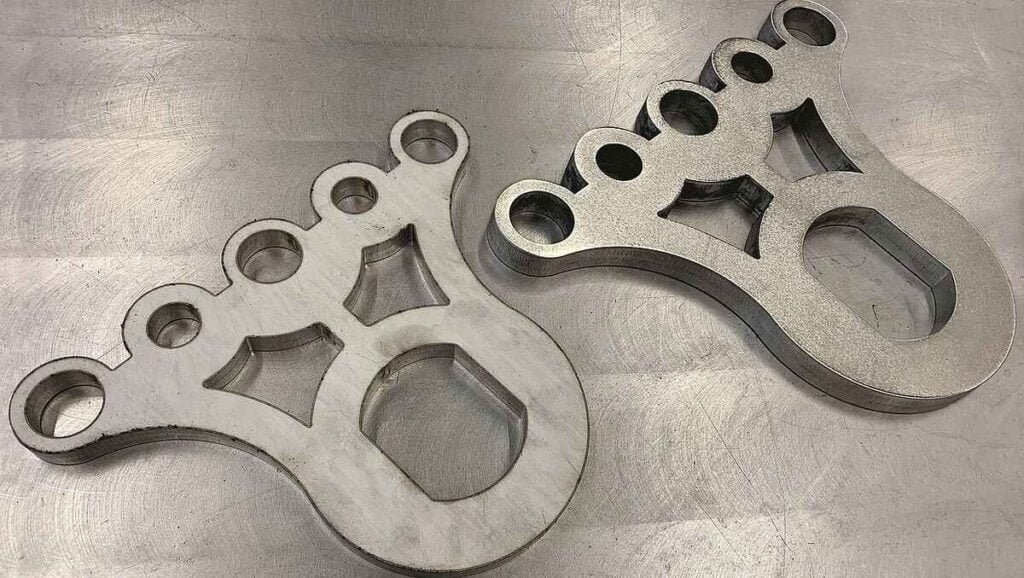
Types of Burrs
Burrs can vary significantly depending on how they are formed during the machining process. Recognizing these types helps in choosing the proper deburring technique.
Machine Burrs
Machine burrs, also known as mechanical burrs, are the most common type. They occur from the mechanical action of cutting tools on the material, often at the edges where the tool exits the workpiece.
Thermal Burrs
Thermal burrs form due to high temperatures generated during processes like laser cutting or welding. The heat causes the edges of the material to melt and resolidify into rough, irregular shapes.
Remaining Burrs
Remaining burrs are small pieces of material that were not completely cut away during the machining process. They remain attached to the surface and can affect the part’s functionality.
Poisson Burrs
Poisson burrs arise due to the Poisson effect, where the material expands in directions perpendicular to the force applied during cutting. This expansion can cause the material to bulge and form burrs.
External Burrs
External burrs are found on the outer edges and surfaces of a workpiece. They are easily visible and often the primary focus during standard deburring processes.
Internal Burrs
Internal burrs are located within the holes or internal cavities of a part. They are more challenging to remove because of their inaccessible locations.
Deburring Tools and Equipment
Deburring is a critical step in manufacturing, requiring specific tools and equipment designed for various materials and applications. Here’s a detailed look at the different types of deburring tools and equipment available:
Manual Tools
Deburring Knives
Deburring knives are hand tools designed to remove burrs from smaller or more delicate parts manually. They are precise and allow fine control, making them ideal for detailed work.
Scrapers
Scrapers are used to remove burrs from flat surfaces and edges. They come in different shapes and sizes, catering to various surface contours and materials.
Mechanical Equipment
Deburring Machines
Deburring machines automate the removal of burrs, enhancing consistency and efficiency. They are suited for large-scale operations and can handle a variety of materials.
Tumblers and Vibratory Finishers
Tumblers and vibratory finishers use a combination of motion and abrasive media to remove burrs from parts. These machines are excellent for simultaneously finishing a large volume of small parts.
Advanced Deburring Systems
Laser Deburring
Laser deburring uses high-powered lasers to remove burrs without physical contact precisely. This method is highly accurate and ideal for materials sensitive to physical stress.
Robotic Deburring
Robotic deburring involves the use of programmable robots equipped with deburring tools. This system offers flexibility and precision, particularly in complex or repetitive tasks.
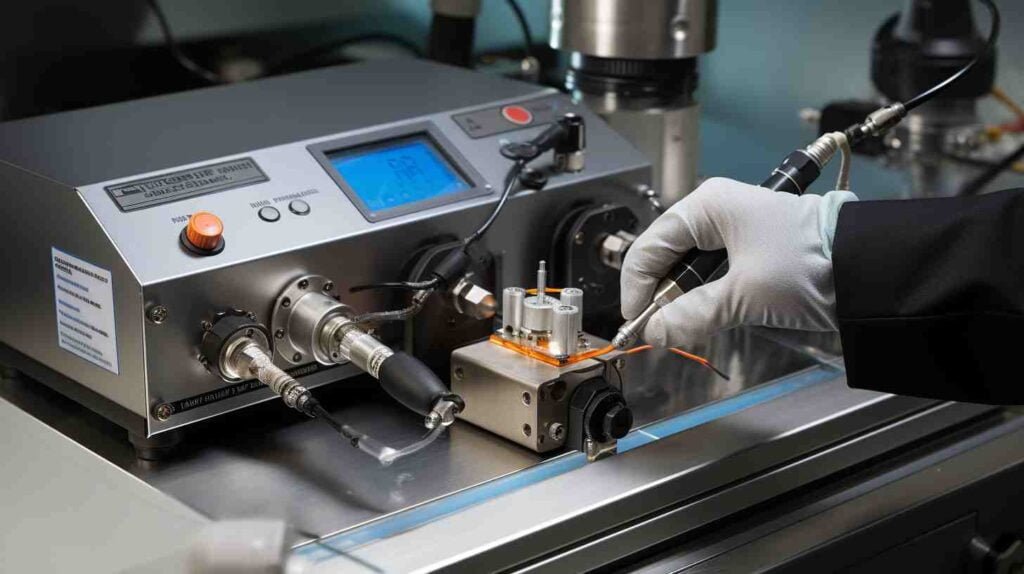
Deburring Techniques
There are several effective techniques for removing burrs, each suited to different types of burrs and manufacturing requirements. Here’s a look at some standard methods:
Mechanical Deburring
Mechanical deburring involves the use of physical force to remove burrs. Tools like deburring blades, tumblers, or vibratory finishers smooth out rough edges mechanically.
Thermal Deburring
Thermal deburring utilizes heat to burn away unwanted material. This process is particularly effective for removing burrs from hard-to-reach places and is commonly used for high-volume production.
Cryogenic Deburring
Cryogenic deburring uses extreme cold, typically involving liquid nitrogen, to make the burrs brittle and easy to remove. This method is suitable for materials sensitive to heat.
Hand Deburring
Hand deburring is performed manually using tools such as files, scrapers, or deburring knives. This method is ideal for low-volume productions and delicate operations where precision is crucial.
The Grinding and the Rolling
Grinding uses an abrasive wheel to remove burrs while rolling uses a roller to flatten or smooth the surface. These processes are efficient for large surface areas.
Electrochemical Deburring
Electrochemical deburring is a precise method that uses electrical currents to remove burrs from metal parts. It is particularly effective for intricate or hard-to-access areas.
Hole Deburring
Hole deburring focuses on smoothing the edges of holes drilled into a workpiece. Tools like rotary burrs or specialized hole deburring cutters are commonly used.
Brushing
Brushing involves using a bristled tool to remove burrs. This can be done manually or with powered brushes in an automated setup, suitable for softer materials or smaller burrs.
Understanding the Deburring Process – How to Deburr?
Before starting the deburring process, it’s crucial to properly set up and calibrate your equipment to ensure optimal results. Here’s how to prepare for deburring:
- Select the Right Tool: Depending on the type and location of the burrs, choose an appropriate deburring tool. This could range from mechanical tools for large burrs to electrochemical setups for precise deburring.
- Material Assessment: Evaluate the material type and the extent of the burring. Different materials and burr sizes may require different deburring techniques.
- Tool Calibration: Ensure the tools are calibrated to the correct specifications for mechanical and automated deburring methods. This includes setting the tool’s speed, pressure, and angle relative to the workpiece.
- Safety Checks: Conduct safety inspections on all equipment to prevent accidents. This includes checking for secure fittings, proper shielding, and ensuring all safety guards are in place.
- Test Run: Perform a test run on a sample piece to check the setup. Adjust the tool settings based on the results to achieve the desired finish.
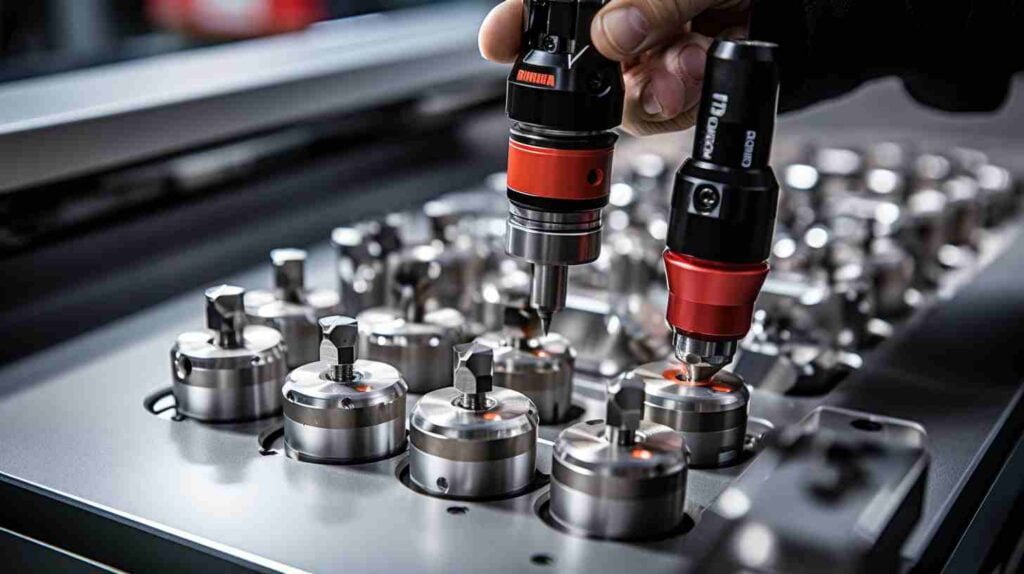
The Deburring Phase: Techniques and Best Practices
During the deburring phase, applying the proper techniques and adhering to best practices is essential for achieving a smooth and precise finish. Here are some critical steps and considerations:
How to Use a Deburring Tool?
- Tool Selection: Choose the right tool based on the burr size and location. Hand tools, mechanical devices, or automated systems might be appropriate.
- Handling: For manual deburring, maintain a firm yet gentle grip to ensure control without applying excessive force, which could damage the part of the tool.
The Optimal Feed Rate
- Adjust According to Material: Different materials require different feed rates. More complex materials typically need a slower feed rate to prevent tool wear and overheating.
- Consistency is Key: Maintain a consistent feed rate during the deburring process to ensure uniform removal of burrs across the workpiece.
Lubricants Adequate
- Reduce Friction and Heat: Use appropriate lubricants to minimize friction and heat generation, which can lead to premature tool wear and additional burrs.
- Material Compatibility: Ensure the lubricant is compatible with the material being deburred to avoid chemical reactions or contamination.
Cut Speed Correct
- Material Specific: Determine the ideal cutting speed based on the material’s properties and the deburring tool used.
- Balance Efficiency and Quality: Faster speeds can increase efficiency but may compromise the quality of the finish. Find a balance that maintains quality while being efficient.
Plan Your Tool Path
- Avoid Overlap and Redundancy: Plan the tool path to cover all necessary areas without unnecessary overlap, which can waste time and resources.
- Complex Shapes: For complex shapes, use a CAD system to simulate and optimize the tool path beforehand.
Secure Workpieces
- Stability is Crucial: Ensure the workpiece is securely fastened to prevent movement during the deburring process, which could lead to inaccuracies or damage.
- Check Clamps and Fixtures: Regularly inspect clamps and fixtures for wear and ensure they provide sufficient pressure to hold the workpiece without deforming it.
Depth Control
- Uniform Depth Setting: Set the depth of the deburring tool consistently across the workpiece to prevent uneven surfaces and ensure a uniform finish.
- Monitor Wear: Check the tool regularly for wear, which can affect depth control and require recalibration or replacement.
Burr Size Assessment
- Regular Inspection: Frequently assess the size of the burrs during the deburring process to determine the effectiveness of the current settings and techniques.
- Adjustments: Make adjustments to the tool speed, feed rate, or depth based on the size of the burrs being removed.
Burr Location
- Accessibility: Consider the accessibility of the burrs. Internal burrs or those in complex geometries may require specialized tools or techniques.
- Visual Inspection: Regularly inspect the workpiece from various angles to ensure all burrs are being effectively removed, particularly in hard-to-see areas.
The Benefits of Deburring
Deburring is a crucial step in the manufacturing process that enhances the quality and functionality of metal parts. Here are some key benefits:
Surface Smoothness
- Aesthetic and Functional Quality: Deburring removes rough edges and burrs, resulting in a smooth surface.
Safety Enhanced
- Reduced Risk of Injury: Removing these burrs significantly reduces the risk of cuts and scratches, enhancing safety in the workplace.
Improved Precision
- Tighter Tolerances: By removing burrs, parts fit together more precisely in assemblies.
Increased Production Efficiency
- Less Machine Downtime: Smooth, burr-free parts cause less wear and tear on machines and tools, leading to fewer breakdowns and maintenance issues.
Easier Assembly
- Faster and Less Costly Assembly: Deburred parts are more accessible to assemble, reducing the time and effort required to fit parts together.
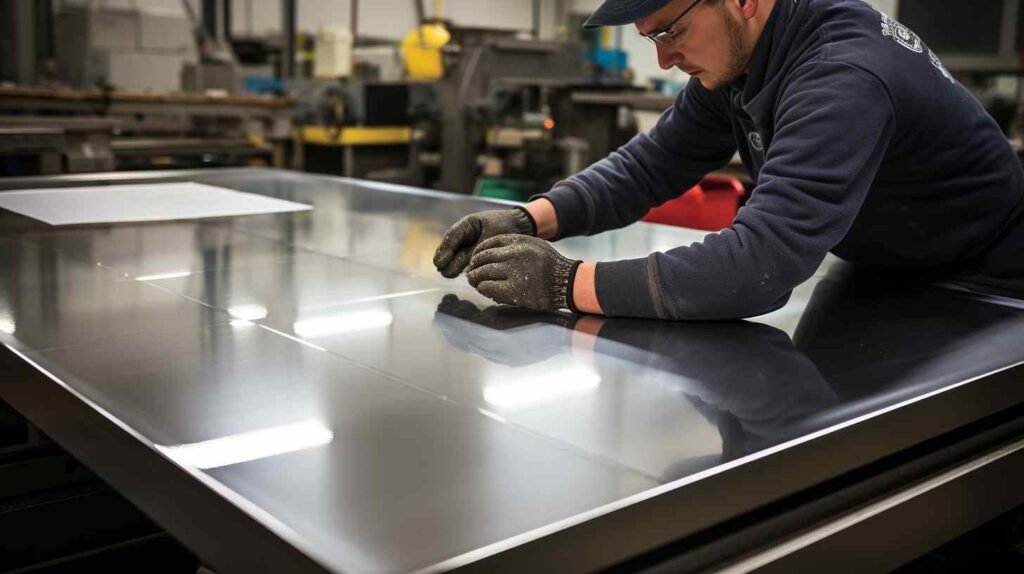
Deburring Safety Considerations
Deburring, while essential, involves certain risks and requires careful handling to ensure safety. Here’s how to manage these challenges effectively:
Safety Precautions for Deburring Operations
- Proper Protective Equipment: Always wear appropriate personal protective equipment (PPE), gloves, goggles, and hearing protection.
- Training and Awareness: Ensure all operators are thoroughly trained in deburring tools and understand the safety risks associated with different deburring methods.
- Regular Tool Maintenance: Keep all deburring tools and machines well-maintained to prevent malfunctions that could lead to accidents.
The Hazards of Deburring
- Sharp Edges: The primary hazard in deburring is the sharp edges of the burrs themselves, which can easily cut skin or snag clothing.
- Flying Particles: Mechanical deburring can dislodge small metal particles or debris, which can be hazardous if they come into contact with eyes or skin.
- Noise: Some deburring processes, mainly mechanical ones, generate significant noise, posing a risk of hearing damage over prolonged exposure.
How to Reduce the Risk of Deburring
- Enclosure and Ventilation: Where possible, enclose deburring operations to contain flying debris and reduce noise. Ensure adequate ventilation to remove any harmful dust or fumes.
- Use of Automated Systems: An automatic deburring system reduces the need to handle sharp parts manually.
- Regular Safety Audits: Conduct regular safety audits to identify and mitigate new deburring risks.
Conclusion
Deburring is essential to the manufacturing process, critical for ensuring machined parts’ quality, functionality, and safety. It enhances the smoothness of surfaces, increases precision, improves safety during handling, boosts production efficiency, and simplifies assembly processes. By understanding the various types of burrs and employing appropriate deburring techniques, manufacturers can produce parts that meet strict industry standards and satisfy customer demands.
Do you need a reliable sheet metal parts manufacturer? Shengen is the place to go. We specialize in sheet metal laser cutting, bending, surface finish, and CNC Machining. Reach out to Shengen Today and seek help from professionals!
FAQs
What materials can be deburred?
Almost any material used in manufacturing, including metals, plastics, and composites, can be deburred.
What is the purpose of deburring?
Deburring removes sharp edges from materials after machining, improving parts’ safety, functionality, and aesthetics.
What is the difference between deburring and finishing?
Deburring focuses on removing unwanted burrs from materials while finishing enhances overall surface characteristics like texture and appearance.
Is deburring hard?
The difficulty of deburring varies with the material complexity and part design. Advanced tools and technology have simplified the process.
More Resources:
Automated Deburring Systems – Source: Timesavers
Lubricant Types – Source: Tameson
Types of Deburring Tools – Source: GlobalSpec
Hey, I'm Kevin Lee

For the past 10 years, I’ve been immersed in various forms of sheet metal fabrication, sharing cool insights here from my experiences across diverse workshops.
Get in touch

Kevin Lee
I have over ten years of professional experience in sheet metal fabrication, specializing in laser cutting, bending, welding, and surface treatment techniques. As the Technical Director at Shengen, I am committed to solving complex manufacturing challenges and driving innovation and quality in each project.

